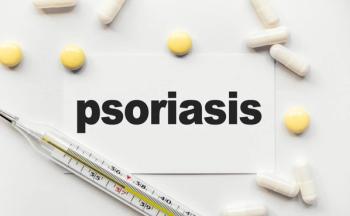
Predicting Which Patients Will Develop HCC After HCV Treatment
Patients who are treated with direct-acting antivirals to treat hepatitis C virus (HCV) are still at risk of developing hepatocellular carcinoma (HCC).
The Enhanced Liver Fibrosis (ELF) score may be a useful marker for predicting which patients with hepatitis C treated with direct-acting antivirals (DAAs) will go on to develop hepatocellular carcinoma (HCC), according to a study
DAAs revolutionized the treatment of hepatitis C virus (HCV) with high sustained virologic response (SVR) rates, but there is some evidence that even patients who achieve SVR may go on to develop HCC.
“Advanced liver fibrosis was reported to be the most important risk factor for HCC development after SVR; therefore, evaluation of the degree of liver fibrosis is important,” the authors explained.
The ELF score is composed of 3 liver fibrosis markers and has been shown to be useful in patients with nonalcoholic fatty liver disease, primary biliary cholangitis/cirrhosis, and chronic hepatitis C. The authors assessed the ELF score and other fibrosis markers including type IV collagen, Wisteria floribunda agglutinin-positive Mac-2-binding protein (M2BPGi), Fibrosis-4 (FIB-4) index, tumor markers, and biochemical tests associated with HCC development after viral eradication.
The study enrolled 122 patients with chronic hepatitis C or liver fibrosis from 3 hospitals in Japan. They had been initiated on DAAs between October 2014 and September 2016. Of 999 patients were treated with DAAs, 743 achieved SVR. Only 122 patients had stored blood samples and thus were included in the study.
The majority (59%) of patients were female, and there was a mean age of 68.7 years. Nearly one-third (30%) were diagnosed with cirrhosis clinically. Most (92.6%) were treated with daclatasvir plus asunaprevir, 4.9% were treated with ledipasvir plus sofosbuvir, and 2.4% were treated with sofosbuvir plus ribavirin.
All biomarkers showed a significant decrease by 24 weeks post treatment (PT24W) compared with baseline. The fibrosis markers had decreased by 10% to 58% PT24W, although the decreases were greater in the period from baseline to the end of therapy compared with end of therapy to PT24W, “suggesting that the decrease in fibrosis markers from baseline to the end of DAA therapy may reflect both inflammation and fibrosis in liver tissue,” the authors suggested.
Twenty-three (18.8%) patients developed HCC. The factors associated with a risk of developing HCC, based on univariate analysis, were high baseline ELF score, PT24W ELF score, baseline FIB-4 index, PT24W α-fetoprotein (AFP) level, and baseline prothrombin time. Using a multivariate analysis, only high PTW24 ELF score was associated with a significant risk of developing HCC.
The researchers determined that ELF score at 24 weeks after completing DAA therapy is a useful marker for predicting HCC development in patients with chronic hepatitis C who achieved SVR with treatment. While M2BPGi, FIB-4 index, and AFP were all reported as useful in previous studies, the authors determined PT24W ELF score was the most useful marker.
The small number of patients in the study was one of the limitations, the authors noted. In addition, although age and cirrhosis are known risk factors for the development of HCC, they were not found to be associated in this study.
“The number of patients who achieve SVR by DAA therapy is expected to increase in the future; therefore, the incidence of HCC development after SVR is also expected to increase,” the authors concluded.
Reference
Kawaguchi T, Ide T, Amano K, et al. Enhanced liver fibrosis score as a predictive marker for hepatocellular carcinoma development after hepatitis C virus eradication. Mol Clin Oncol. Published online August 23, 2021. doi:10.3892/mco.2021.2377
Newsletter
Stay ahead of policy, cost, and value—subscribe to AJMC for expert insights at the intersection of clinical care and health economics.






































